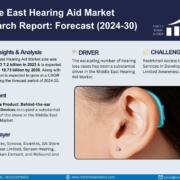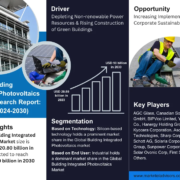
Electrodeionization (EDI) is a cutting-edge technology playing a crucial role in water purification processes across various industries. As environmental concerns escalate and the need for high-purity water increases, EDI has emerged as a viable solution for meeting stringent water quality standards. The global electrodeionization market size stood at USD 1,094.05 million in 2023 and is expected to reach USD 2,099.28 million by 2032, growing at a compound annual growth rate (CAGR) of 7.50% during the forecast period from 2024 to 2032. This blog post delves into the market’s segmentation, regional insights, competitive landscape, and future forecasts to provide a comprehensive understanding of this rapidly evolving industry.
Market Overview
Electrodeionization combines ion exchange and electrochemical processes to remove ions from water, making it an essential technology for industries that require high-purity water. Historically, EDI has gained traction as a sustainable alternative to traditional water treatment methods, such as reverse osmosis and chemical ion exchange. As global water scarcity becomes a pressing issue, the demand for efficient and environmentally friendly purification technologies like EDI has surged.
The market has witnessed significant growth due to rising industrial activities and stringent regulations regarding water quality. As a result, many sectors are increasingly adopting EDI systems to ensure compliance and enhance operational efficiency.
Market Segmentation
The electrodeionization market can be segmented based on design, type, and end use. Each of these segments plays a pivotal role in shaping the market landscape.
By Design
- Plate and Frame Construction
- This design features a stack of plates that facilitate the flow of water and the removal of ions. The simplicity of the design allows for easier maintenance and scalability, making it a popular choice in various applications.
- The plate and frame construction currently holds a significant share of the market, particularly in industries where space constraints and ease of operation are critical.
- Spiral Wound Construction
- In this configuration, membranes are wound into a spiral shape, enhancing surface area and allowing for more compact systems. This design is favored in applications requiring high efficiency and reduced energy consumption.
- As industries push for innovation and sustainability, the spiral wound construction is gaining traction, particularly in sectors such as electronics and pharmaceuticals.
By Type
- Membrane Separation
- Membrane separation is a crucial technology that utilizes selective barriers to separate ions from water. It is widely used in the pharmaceutical and semiconductor industries, where ultra-pure water is essential.
- This method continues to see robust growth, driven by technological advancements and increased regulatory scrutiny regarding water purity.
- Ion Exchange
- Ion exchange involves the replacement of undesirable ions in water with more acceptable ones. This method is highly effective for removing specific contaminants, making it indispensable in various applications.
- The ion exchange segment remains a significant contributor to the market, especially as industries seek more tailored water treatment solutions.
- Others
- Other technologies and methods, while smaller in market share, still play an important role in niche applications. These include hybrid systems that combine multiple purification techniques for enhanced performance.
By End Use
- Power Generation
- The power generation sector requires high-purity water for cooling and boiler feed, making EDI essential for maintaining operational efficiency and minimizing equipment damage.
- The growing focus on renewable energy sources and advancements in technology are expected to boost demand in this sector.
- Pharmaceuticals
- The pharmaceutical industry operates under stringent regulations, necessitating ultra-pure water for drug production. EDI systems help ensure compliance with these regulations while minimizing operational costs.
- The increasing number of pharmaceutical manufacturing facilities globally is likely to drive further demand for EDI solutions.
- Electronics & Semiconductor
- The electronics industry relies heavily on ultra-pure water for semiconductor fabrication. As the demand for electronic devices continues to rise, so too does the need for efficient water purification technologies.
- This sector is anticipated to be a major growth driver in the coming years.
- Chemicals
- The chemicals industry utilizes EDI systems for water treatment, ensuring that the water used in production processes meets the required purity levels.
- As regulatory frameworks tighten, the adoption of EDI technologies is expected to increase in this sector.
- Others
- Other sectors, including food and beverage, automotive, and municipal water treatment, are also exploring EDI technology to improve water quality and sustainability.
Regional Analysis
The electrodeionization market exhibits varied trends across different regions, influenced by factors such as industrial growth, regulatory standards, and environmental concerns.
- North America
- The North American market is characterized by advanced infrastructure and stringent regulatory frameworks. The United States and Canada are key players, with substantial investments in water purification technologies.
- Europe
- Europe is witnessing robust growth due to increasing environmental awareness and government initiatives promoting sustainable practices. Countries like Germany and the UK are leading the charge in adopting EDI technology.
- Asia-Pacific
- The Asia-Pacific region is projected to see the highest growth rate, driven by rapid industrialization, urbanization, and the need for efficient water treatment solutions. China and India are significant contributors to this trend.
- Latin America and Middle East & Africa
- These regions are gradually adopting EDI technology, focusing on addressing water scarcity and improving water quality for industrial applications.
Competitive Landscape
The electrodeionization market features a diverse array of players, ranging from established companies to innovative startups. Major players include:
- SUEZ Water Technologies & Solutions
- Veolia Environnement S.A.
- GE Water & Process Technologies
- Parker Hannifin Corporation
- Koch Membrane Systems
These companies are actively engaging in strategic partnerships, mergers, and acquisitions to expand their market presence and enhance their product offerings. Ongoing research and development efforts are also focused on improving EDI efficiency and reducing operational costs.
Market Forecast (2024-2032)
The global electrodeionization market is set to experience substantial growth over the next decade. The projected CAGR of 7.50% reflects increasing demand from various end-user industries and the ongoing shift towards sustainable water treatment solutions. Factors such as rising industrial activities, regulatory pressures, and technological advancements will continue to drive market growth.
Key Drivers:
- Growing concerns over water quality and scarcity.
- Rising regulatory pressures on industries to maintain high water purity standards.
- Increased adoption of EDI technology across various sectors.
Challenges:
- High initial investment costs associated with EDI systems.
- Competition from alternative water treatment technologies.











